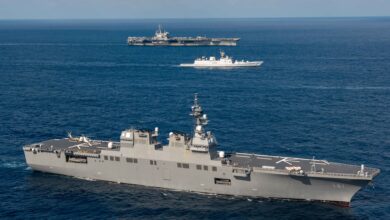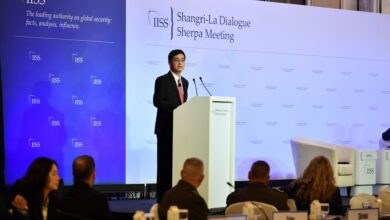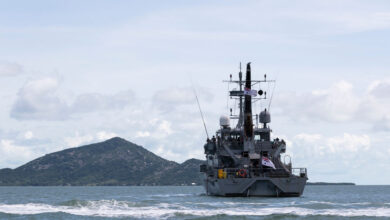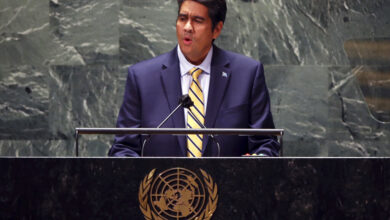Energy collaboration key in shared Indo-Pacific vision

FORUM Staff
The United States’ vision for a free and open Indo-Pacific region involves economic development and cooperation among partner nations and companies through U.S.-led initiatives, a U.S. State Department official said during a June 2019 appearance at a Washington, D.C., think tank.
Sandra Oudkirk, senior U.S. State Department official at the Asia-Pacific Economic Cooperation (APEC), told those gathered at the Center for Strategic and International Studies on June 18, 2019, that the U.S. was putting an initial emphasis on energy development.
“The U.S. Indo-Pacific vision is built on principles that are widely shared throughout the region,” Oudkirk said, “ensuring the freedom of the seas and skies, insulating sovereign nations from external coercion, promoting market-based economics, open investment environments, and fair and reciprocal trade and supporting good governance and respect for individual rights.”
APEC, a regional forum based in Singapore, was established in 1989 “to leverage the growing interdependence of the Asia-Pacific.” It has 21 members from the Indo-Pacific region and Latin America. Oudkirk described APEC as “the cornerstone of the economic pillar of the Indo-Pacific vision.”
The Indo-Pacific region needs U.S. $1.7 trillion in annual infrastructure investment, said Oudkirk, pictured. Washington’s strategy to address this is an initiative called Enhancing Development and Growth through Energy, or Asia EDGE.
“Asia EDGE is a whole-of-government effort to grow sustainable and secure energy markets throughout the Indo-Pacific,” she said, “to strengthen the energy security of our allies and partners, create open, efficient rules-based and transparent energy markets, improve free, fair and reciprocal energy trading relationships and expand access to affordable, reliable energy throughout the Indo-Pacific region.”
Coupled with Asia EDGE is the Infrastructure, Transaction and Assistance Network. An early success of the two is the Papua New Guinea Electrification Partnership in which Australia, Japan, New Zealand and the U.S. collaborated to increase Papua New Guinea’s access to electricity, “while avoiding unsustainable debt burdens,” Oudkirk emphasized. The partnership was announced at an APEC event in November 2018.
“Japan has aligned [U.S.] $10 billion in financing with Asia EDGE,” she said, “to stimulate investment in U.S.-Japan private-sector projects.” Washington, meanwhile, expects to have U.S. $60 billion available through the U.S. International Development Finance Corp.
Other energy projects Oudkirk outlined included the modernization of Indonesia’s energy grid through a partnership between its state electric company and the U.S. Agency for International Development, and efforts in the Philippines and Vietnam to streamline the regulatory framework for the importation of liquified natural gas from the U.S.
Switching to natural gas will bring health benefits to those who now rely on dirtier energy sources that include wood and animal dung, said Nigel Hearne, Chevron’s president for Asia-Pacific exploration and production.
India’s Vaman Desai, a director at Bower Group Asia in Washington, asked Oudkirk how she viewed India’s Look East Policy and how it relates to the U.S. Indo-Pacific strategy.
“We work with India a lot,” Oudkirk responded, “bilaterally and through a variety of international groupings. G20 is a great example of that. And India clearly is a pillar of the Indo-Pacific. We have a lot of subnational linkages, and India has been a laboratory for developing a lot of off-grid renewable technologies that are applicable to many countries in Southeast Asia.”




